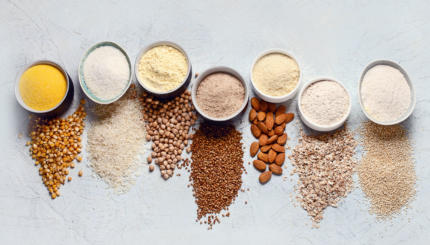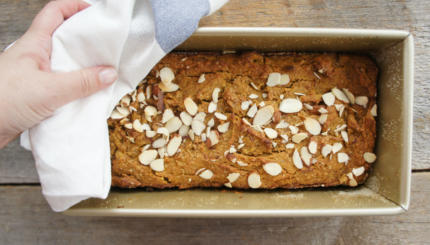There’s something about Passover that makes it my undisputable favorite Jewish holiday. With the perfect combination of rituals, storytelling and culinary traditions, along with some neurotic spring cleaning incentives, this beautiful festival carries with it meaning and memories, and the opportunity to create new ones year after year.
I grew up in Rome, Italy, the proud member of the oldest Jewish Community in Europe, with an uninterrupted presence in the city for over 22 centuries, its history tracing back to a delegation coming from Israel and sent at the time of the Maccabees looking for allies against the Greeks. Counting about 13,000 members, it’s a small community in number, but a strong community at heart: the Jews of Rome have their own minhag, their own tradition, not Sephardic nor Ashkenazi. The prayers’ melodies are unique, we don’t speak Yiddish or Ladino but Giudaico Romanesco, a hybrid of Hebrew and Roman dialect, and the cuisine is a delightful blend of Italian flavors abiding by kosher laws that continues to attract international praise. To me it tastes like home.
There are a few staples that make the Passover meal a traditional Roman one: I pomodori col riso, tomatoes stuffed with rice, abbacchio, roasted lamb, braised peas and roasted potatoes as sides. The seder plate itself is quite a sight: no small symbolic portions but a basket overflowing with greens: the bitter herb is a head of lettuce, sitting next to a full stalk of celery, eggs, matzoh, salty water, a furry lamb’s leg that we shampooed and blow dried for the occasion, and a bowl of charoset, following a recipe that changes from family to family. In mine, it’s a raw paste made of almonds, sugar and blood oranges.
Perhaps the most notable Roman Passover food is the ciambellette, homemade cookies that have been gracing most households for generations. I grew up making these cookies at home with my mother and sisters before the beginning of the holiday.
The very simple sweet pastry dough calls for flour, eggs, olive oil and sugar. The flour could be eaten during Passover but only in foods that were prepared before the holiday and within certain conditions. My mother bought the flour from the Jewish community, so it was “kosher”, or supervised. Much like Matzah, the cookies had to be made within 18 minutes from start to finish on a clean surface.
My grandmother’s original recipe had vanilla among the ingredients, but my mother took Passover to the next level of kashrut, and since vanilla extract was not among the kosher for Passover items available through the community store, we didn’t use any.
The Roman Jewish community is one of tradition and history. As is the case in many other European cities, Rome is considered an Orthodox community, and there are no other denominations, although that doesn’t mean that all of its members adhere to the Orthodox rules and lifestyle.
In 2012, the Israeli Orthodox rabbinate questioned the legitimacy of using flour at home to prepare kosher for Passover food. They argued that with no supervision, there is no guarantee that the rules are strictly followed, and therefore many families may be risking to eat products that are not suited for the holiday, thus committing a sin. As a consequence, in 2013 the Rabbinical Association of Italy banned the making of the ciambellette at home, sparking outrage throughout the very proud community and a longstanding controversy. But Jews are crafty, and within a few months a handful of Jewish Institutions organized a public making of ciambellette: families could reserve a time slot, bring their own recipe, and go prepare their cookies in a large kosher kitchen under the supervision of a rabbi and using the provided basic ingredients. In other words, the tradition left from the front door and came back through the window in one of the greatest examples of community engagement to date!
Since then, hundreds of families have come together every year to bake together, share recipes, stories and memories, and create new memories of their own. It’s a new iteration of the same journey, full of pride, creativity and joy. Hag Sameach! Happy Passover! Buon Pesach!
Italian Charoset
Ghila Sanders explains the recipe as follows: Mix ground almond, blood orange juice and sugar to taste until a paste is formed.
Rabbi Ruth Abusch-Magder provides the following measurements for those who would like them.
1 cup ground almonds
1/2 cup blood orange juice
1/4 cup sugar
Traditional Italian Ciambellette Recipe via Ghila Sanders
Note –this is the recipe as passed down in our family and reflects the kashrut of our community. If you have questions or concerns about its suitability for your own family’s table because of the use of flour, we recommend consulting with your rabbi.
Ingredients
3 eggs
½ cup extra virgin olive oil
¾ cup sugar
2 cups flour (approximately)
Zest from one orange and one lemon
A pinch of salt
Preparation
Pre-heat the oven at 350 degrees.
Set a timer for 18 minutes. Make sure workspaces are clean and there is no flour on any surface.
Beat eggs with sugar and oil, then add flour, salt, and zest. The dough should not stick but be smooth and workable.
Roll pastry in circular strips ½ inch in diameter and 3-4 inches in length.
Shape like mini donuts.
All of this should be done BEFORE the timer goes off for the cookies to be in accordance to Jewish tradition.
Line a baking sheet with parchment paper and bake for 25-30 minutes, or until browned.




